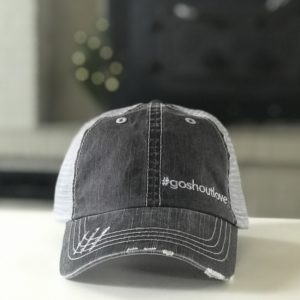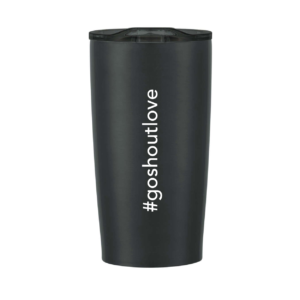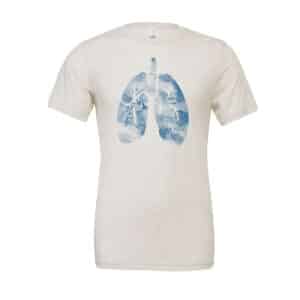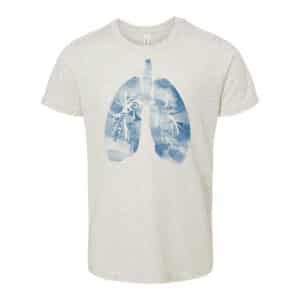Meet Maddox & Paisley
Maddox & Paisley, a brother & sister duo fighting their own individual medical journeys, but defying limits, together.
Maddox is happy and loving with a contagious smile. He loves CoCo, Hercules, and 101 Dalmatians.
Paisley is sweet, compassionate, and loving. She enjoys soccer, music, and being with her family.
We invite you to watch their video, read their story and subscribe to our podcast to listen to an interview with their mom & dad.
“Every single thing. The stress, the tears, the frustration… they are vastly outnumbered by the smiles, laughter, and priceless memories. They have made me a better mom.”
In 2017, Samantha and Andrew were expecting their third child. Their daughters, Paisley and Juliette, were excited to be big sisters. At a routine 20 week anatomy scan, Samantha and Andrew learned of some concerns with their baby’s head measurements and the baby’s spine.
“This was all new territory for us. We immediately began researching and were overwhelmed with what we saw,” Samantha remembers. They were referred to a local Maternal Fetal Medicine specialist for further testing and also traveled across Pennsylvania to seek a second opinion. Their baby was prenatally diagnosed with Spina Bifida, Chiari Malformation II and likely hydrocephalus. None of the doctors in Pittsburgh or Philadelphia predicted the medical complexities that were to come.
Maddox was born in December and was quickly transported by ambulance to the NICU of the local Children’s Hospital. Even though Samantha was recovering from giving birth via C-section, she insisted on being discharged so she could be at Maddox’s side. “Having your baby whisked away and not being able to touch them is a terrifying feeling,” Samantha shares. “I was going to do everything in my power to get to him. It was my ultimate goal.”
The day after he was born, Maddox had major surgery to repair his myelomeningocele, a severe form of Spina Bifida. In the NICU, Maddox developed hydrocephalus, a buildup of cerebrospinal fluid in the ventricles of his brain, which can be associated with Spina Bifida. About a month after his back surgery, a neurosurgeon placed a VP (ventriculoperitoneal) shunt in Maddox’s brain to drain the excess fluid from his brain into his stomach.
Another possible complication related to Spina Bifida is Chiari Malformation, a condition where part of the brain stem descends into the cervical spine and can cause apnea, which is slow or stopped breathing. Chiari Malformation is symptomatic in about 1 out of 3 people who are diagnosed.
While Maddox was in the NICU, he had numerous frightening episodes when he stopped breathing. When he was three days old, he first stopped breathing for the first time. At five days old, Maddox lost the drive to breathe and was put on the ventilator. “On Christmas Eve, we were all crying in the waiting room because we didn’t know what his life would be like,” Samantha recalls of this difficult time. “They thought he had an abnormality in the development of his brain stem.”
Doctors were able to extubate Maddox the day after Christmas. He coded the first and only time Samantha tried to breastfeed him. From then on and had numerous periods of not breathing, aspirating, and dropping his oxygen saturation.
Maddox had his first sleep study in January, which showed mixed central and obstructive apnea. Doctors then learned that Maddox’s Chiari Malformation was symptomatic and that it was dangerously affecting his breathing. A pulmonologist told the family that his central apnea was above what they typically see in children with symptomatic Chiari. Maddox’s neurosurgeon said she was not expecting it and he was very symptomatic. About two weeks after his shunt surgery, Maddox underwent yet another major surgery to treat his Chiari Malformation called a decompression, where the surgeon removes part of the skull to make more room for the brain. A tracheostomy has been on the table since birth because of the severity of Maddox’s Chiari and it will never be off the table.
In the NICU, Maddox had feeding challenges as well. Doctors placed a temporary nasogastric (NG tube) but Maddox began to aspirate and choke on the feeds. He also developed severe gastroesophageal reflux disease (GERD). To treat these complications, surgeons placed a gastrostomy tube (G tube), which is a tube placed directly into the stomach for nutrition and medication and performed a procedure called a Nissen to treat his GERD.
After 79 days in the NICU, Maddox was finally discharged and went home to live with his family. Samantha and Andrew were so happy to have their family of five under one roof. Samantha shares, “It honestly felt like that day would never come. You never think that you would get ‘used’ to being in the NICU, but we had. It’s where we spent our first moments as a family of five together. It’s where we prayed together and cried together. It’s also where we celebrated small victories together. However, when that day came, it was one of the best days of my life.”
About 3 months later, Maddox began to show signs of a shunt malfunction and was taken to the hospital for evaluation. His shunt was originally put in his left side, but it could be seen through his skin. It got to the point where it was dangerously protruding through his skin and posed multiple infection risks. His neurosurgeon had to remove his shunt from his left side and place it on his right side.
In August of 2018, the family received a new diagnosis that would change the trajectory of Maddox’s journey. Doctors found arachnoid cyst on the front of his cervical spine right at his brain stem. Maddox underwent another major surgery called a cyst fenestration, where a neurosurgeon opens the cyst to release pressure allowing the contents to be absorbed naturally by the brain.
In April of 2019, the family was given the devastating prognosis that the cyst could eventually compress Maddox’s brain stem and it could be a life ending event. “This was something that quite literally knocked the wind out of us and knocked us all the way off our feet. You never feel like something like that could happen to you, until it does,” explains Samantha.
The family found themselves in a season of surgery after surgery. Maddox has had five shunt revisions, countless scopes and Botox injections into his salivary glands because he aspirates his saliva and chokes on it causing a drop in his oxygen saturations. Among the surgeries and procedures, Maddox got pneumonia and was in and out of the hospital several times. “These were some of our most trying times. It felt like we were living at the hospital. I would turn on the car and the GPS on my phone would automatically pop up saying 35 minutes to work, meaning the hospital. It took a toll on us, but we survived,” Samanta says.
In July of 2019, Maddox developed symptoms of tethered cord, a condition where the spinal cord attaches to the tissue around it. Tethered cord can cause nerve damage if left untreated. Maddox’s neurosurgeon performed spinal cord release surgery to “untether” the spinal cord and the spinal tissue.
Maddox has undergone 18 invasive surgeries in his two years of life. Maddox’s last major surgery was another decompression, a cervical spinal cord detethering and the placement of an internal arachnoid shunt in August of 2020. This was a very rough surgery for Maddox. Though he recovered well from a respiratory standpoint, it has proven to be a very difficult recovery for him. Because of the nature of the surgery and how extensive it was, Maddox lost function of all his limbs. He has regained some function, primarily in his legs, but has sensory loss that is going to take a long time to get back.
Maddox works hard in Physical, Occupational, Vision and Speech therapies. Vision therapy addresses his Cortical Visual Impairment (CVI). In PT, Maddox is working on sitting propped and independently, rolling over, and maintaining head and neck control. In OT, Maddox is trying to bear weight through his hands and to purposefully manipulate toys. In Speech, Maddox is learning ways to communicate. They created a picture book to encourage him to make choices with his eyes and to associate the pictures with names.
Maddox uses oxygen, a pulse ox monitor and a feeding pump. He uses a Kid Kart as a wheelchair and also has braces and a stander, which they hope to be able to use soon. Samantha and Andrew have been intentional about normalizing the medical equipment for their family. The couple values honesty in educating their family about Maddox’s medical needs. From this open approach, they have witnessed their daughters rise up as advocates for their brother, educating strangers, friends and family. They welcome curiosity as a doorway to education and inclusion.
Maddox is deeply loved by his family for who he is as a person. Samantha beams, “When we look at Maddox, we don’t see all the cords and tubes. We see our son. We see Maddox. The girls see their brother. He’s a person and deserves to be treated as such.”
From one rare medical journey to two
In August of 2020, seven-year-old Paisley began to develop severe headaches, back pain and leg pain. One day she was laying on the couch and said her head hurt and she felt like she couldn’t walk. Andrew was on his way to work, but quickly turned around to take Paisley the ER. She was admitted to the same Children’s Hospital where Maddox receives all of his care. Paisley underwent a brain MRI, a spine MRI, and a CT scan with and without contrast. She was diagnosed with Arteriovenous Malformation (AVM) in the basal ganglia region of her brain, which is a serious and rare condition.
“This journey is one that we never expected. We had been so consumed by the thoughts and happenings with Maddox, that we honestly hadn’t stopped to think that one of our girls could have something serious going on,” Samantha shares. “There have certainly been many ups and downs, and so, so many tears, but we try not to let it run our lives. We still find ways to have fun and make memories, despite appointments, surgeries, and therapies.”
An angiogram confirmed that Paisley has an AVM in an inoperable area deep within her brain. Since the risk for traditional surgery was too high, Paisley underwent Gamma Knife surgery in September of 2020. It could take up to three years to be effective and can have complications and side effects. If it ruptures, it can lead to a stroke or be fatal.
Samantha explains, “We have a long road ahead, but now it’s a waiting and praying game. The AVM can still rupture until it’s obliterated, but we are hopeful that won’t happen. She will have an MRI in 6 months to check the progress of it.”
While her brother’s journey has been more extensive, Paisley has been brave and strong as she begins her own journey. She has handled numerous doctor appointments and tests with “Paisley Power”. There have been some tears because she doesn’t understand why she has an AVM, but she doesn’t let it stop her from living her best life. She loves to take care of other people, even in the midst of her own challenges. “Paisley is one the sweetest little girls with one of the biggest hearts you’ll ever meet,” Samantha proudly shares of her daughter.
Time to get loud shouters!
Throughout the month of November we will be shouting love for Maddox and Paisley!
So click here to shop now where every purchase in November will help with expenses related to appointments for Maddox and Paisley, including helping the family save up for a wheelchair lift for their vehicle.









































































